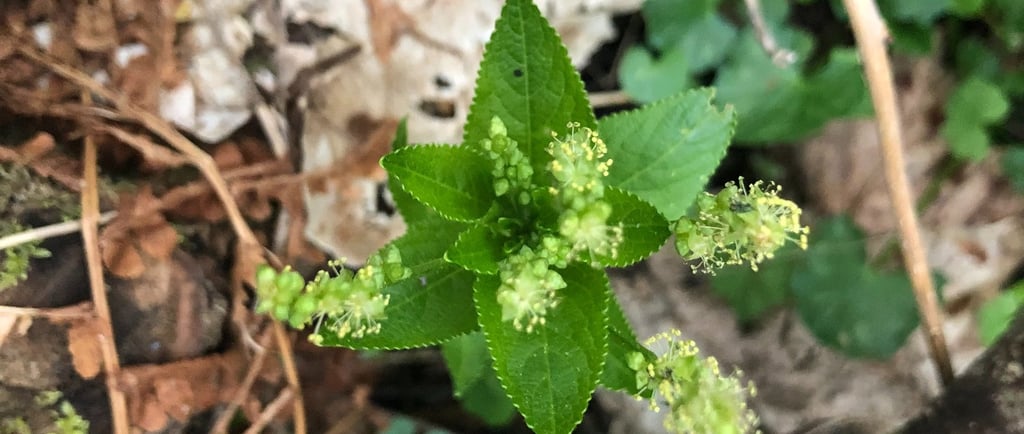Mercurialis perennis
Dog's mercury
ANGIOSPERMSATLANTIC RAINFORESTSPECIES SPIELS
IM
4/22/20252 min read


Dog's mercury is an early flowering species of the spurge family Euphorbiacea. Like other members of this family, it is seriously poisonous.
Dog's mercury is typically a woodland plant - hence the early appearance of its leaves and flowers from February onwards, before the casting of dense shade by the overstory - but can also occur in upland habitats. Although it can tolerate acidic soils, dog's mercury is most abundant in calcareous ground. I have tagged this post as "Atlantic rainforest" as those are the types of woodlands I'm most often seeing dog's mercury in - but dog's mercury is well adapted to climates across the UK and is not an indicator of Atlantic rainforest habitat.
Ash (Fraxinus exelsior) has similar preferences for basic soils, and therefore these species often occur together. Dog's mercury is named in both NVC communities in which ash is typically the dominant tree species: W8 Fraxinus excelsior-Acer campestre-Mercurialis perennis and W9 Fraxinus excelsior-Sorbus aucuparia-Mercurialis perennis. It is also named in W12 Fagus sylvatica-Mercurialis perennis woodlands which occur in the South of England where beech trees grow on calcareous soils.
I should say that the fact dog's mercury is named in these communities, doesn't mean it will be present in all examples. For example, field maple (Acer campestre) is named in W8 which occurs in Eastern Scotland as far North as Inverness, but field maple is generally viewed to be native only in Southern Scotland (or at least to have only arrived elsewhere with human aid - NE Scotland is well within its bioclimatic range and it might well have naturally arrived in these areas anyway if our woodlands weren't so fragmented).
Back to dog's mercury.
Dog's mercury is sometimes referred to as an ancient woodland indicator, suggesting a slow response to colonise new areas of woodland. This slow capacity to spread likely explains why Mercurialis perennis is uncommon in Northern Scotland and Orkney, and absent from the outer Hebrides, Coll, Tiree and Shetland. It is also rare in Ireland - where it is probably not "native" but has likely been introduced (Boatman, 1956) - presumably it will spread here (slowly) due to the abundance of suitable habitat.
On a local scale on the other hand, dog's mercury can spread very quickly through underground rhizomes. This approach to reproduction is similar to many mosses and lichens which are associated with ancient woodland due to their preference for asexual reproduction.
Dog's mercury is the only species of Mercurialis native to the British Isles. Mercurialis annua is an archaeophyte from the Mediterannean which is widespread in Southeast England, but seldom occurs in Scotland. It flowers much later in the year, and though I have never seen this species in the field (or any other field), I don't believe it looks particularly similar.
Oh, the photo at the top is from near Loch Tay. Foreground: dog('s mercury). Background: bark.
Catkin Ecology
Finding Scotland's missing habitat
CONTACT US
info@catkinecology.co.uk
+44 7918 024809
© 2025. All rights reserved.
